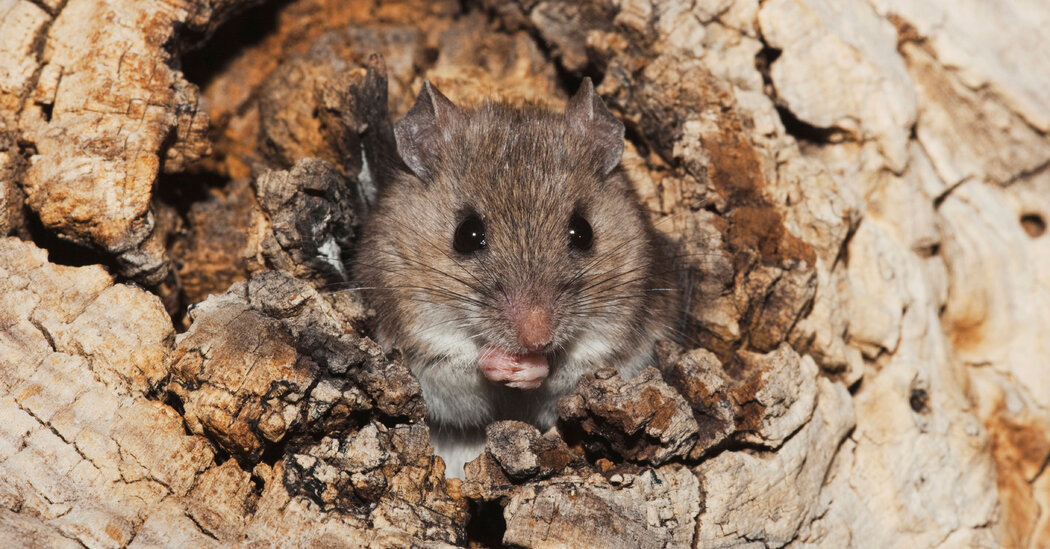
Several large-scale human-caused changes to the planet, including climate change, biodiversity loss and the spread of invasive species, are making infectious diseases more dangerous to people, animals and plants, according to a new study. .
Scientists have already documented these effects in more targeted studies that have focused on specific diseases and ecosystems. For example, they found that a warmer climate could help the expansion of malaria in Africa, and that a decline in wildlife diversity could increase cases of Lyme disease in North America.
But the new research, a meta-analysis of nearly 1,000 previous studies, suggests that these patterns are relatively consistent across the globe and across the tree of life.
“It's a big step forward in science,” said Colin Carlson, a biologist at Georgetown University who was not the author of the new analysis. “This paper is some of the strongest evidence that I think has been published that shows how important it is that health systems start preparing to exist in a world with climate change and biodiversity loss.”
In what is likely to be an even more surprising finding, the researchers also found that urbanization reduces the risk of infectious diseases.
The new analysis, published Wednesday in Nature, focuses on five “global change drivers” that are altering ecosystems across the planet: changing biodiversity, climate change, chemical pollution, the introduction of non-native species and habitat loss or change. .
The researchers collected data from scientific articles that examined how at least one of these factors influenced various infectious disease outcomes, such as severity or prevalence. The final dataset included nearly 3,000 observations of disease risks to humans, animals and plants on every continent except Antarctica.
The researchers found that, overall, four of the five trends studied – changing biodiversity, introduction of new species, climate change and chemical pollution – tended to increase disease risk.
“It means we're probably detecting general biological patterns,” said Jason Rohr, an infectious disease ecologist at the University of Notre Dame and senior author of the study. “This suggests that there are similar types of mechanisms and processes that likely occur in plants, animals and humans.”
The researchers found that biodiversity loss played a particularly important role in increasing the risk of disease. Many scientists have hypothesized that biodiversity may protect against disease through a phenomenon known as the dilution effect.
The theory holds that parasites and pathogens, which rely on the availability of abundant hosts to survive, will evolve to favor common species, rather than rare ones, Dr. Rohr said. And when biodiversity declines, rare species tend to disappear first. “This means that the species that remain are the competent ones, the ones that are really good at transmitting diseases,” he said.
Lyme disease is an often cited example. White-footed mice, which are the main reservoir of the disease, have become more dominant on the landscape as other rarer mammals have disappeared, Dr. Rohr said. This change may partly explain why Lyme disease rates have increased in the United States. (The extent to which the dilution effect contributes to Lyme disease risk has been a matter of debate, and it is likely that other factors, including climate change, also come into play.)
Other environmental changes could amplify disease risks in a wide variety of ways. For example, introduced species can bring with them new pathogens, and chemical pollution can put a strain on organisms' immune systems. Climate change can alter animal movements and habitats, bringing new species into contact and allowing them to exchange pathogens.
In particular, the fifth global environmental change studied by the researchers – habitat loss or change – appeared to reduce the risk of disease. At first glance, the findings might seem at odds with previous studies, which have shown that deforestation can increase the risk of diseases ranging from malaria to Ebola. But the overall trend toward risk reduction has been driven by a specific type of habitat change: increasing urbanization.
The reason may be that urban areas often have better sanitation and hygiene infrastructure than rural ones, or simply because there are fewer plants and animals that serve as disease hosts in urban areas. The lack of plant and animal life “is not a good thing,” Dr. Carlson said. “And that doesn't even mean that animals found in cities are healthier.”
And the new study doesn't negate the idea that forest loss could fuel disease; instead, deforestation increases risk in some circumstances and reduces it in others, Dr. Rohr said.
Indeed, while this type of meta-analysis is useful for revealing general patterns, it can obscure some nuances and exceptions important for managing specific diseases and ecosystems, Dr. Carlson noted.
Furthermore, most of the studies included in the analysis examined a single global change drive. But, in the real world, organisms struggle with many of these stressors simultaneously. “The next step is to better understand the connections between them,” Dr. Rohr said.
